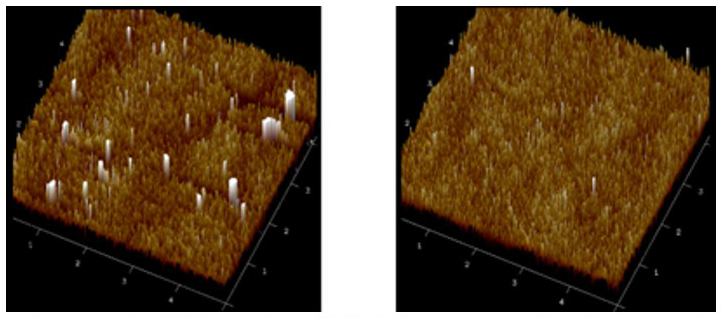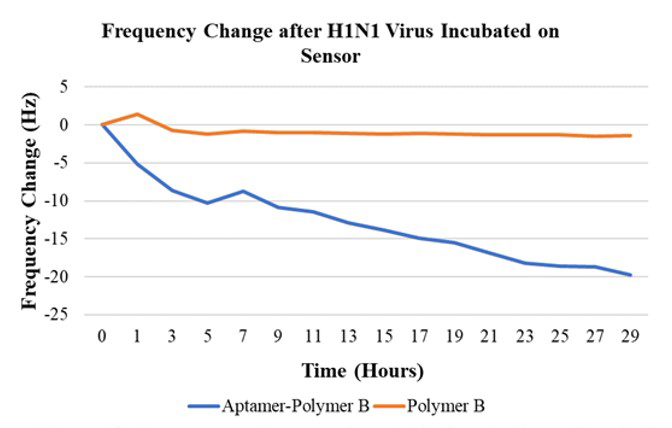Background
The SARS-CoV-2 pandemic called for a new point of care (POC) biosensor that could assess viral infection at a lower limit of detection (LoD) than the current gold standard, RT-PCR. LoD refers to the lowest concentration that can be detected.
As was seen with SARS-CoV-2, RT-PCR rendered a high degree of false negatives, which proved detrimental when individuals—especially asymptomatic ones— unknowingly kept infecting more people. The ideal LoD sensor would minimize the need for the technical training of personnel and processing time required by RT-PCR.
The objective of the IR&D proposal was to develop a novel coating on a gold surface that utilized a quartz crystal microbalance with impedance (QCM-I), a piezoelectric sensing device, to detect a model virus with a high selectivity and a sensitivity that is lower than RT-PCR. A base monolayer was conjugated with an aptamer functionalized hydrogel layer specific to the H1N1 virus, which served as a model virus.
Approach
The technical approach involved first synthesizing and characterizing the base monolayer polymer coatings, denoted as polymers A and B for confidential purposes. The surface roughness of assessed base monolayers, which affects reproducibility in sensor performance and accessibility of targeting ligands, was evaluated with atomic force microscopy (AFM). The aptamer functionalized hydrogel layer was conjugated via click chemistry on the base monolayer. Chemical analysis of base monolayer and functionalized hydrogel was verified with Fourier-transform infrared spectroscopy (FTIR). The project team tested virus binding to the aptamer functionalized surface with QCM-I, where a frequency drop indicated virus binding.

Figure 1: Side 3-D AFM Images of Polymer A (Left) and Polymer B (Right).
Accomplishments
The IR&D project led to the development of a coating that allows selective binding of the H1N1 virus with little to no non-specific binding that does not show noise on the QCM-I signal. The unique coating also led to a patent filing (US Applied 18/459,576) that will be further developed to incorporate thermoreversible features for applications in continuous monitoring and cell engineering.

Figure 2: Frequency change after statis incubation of a viral sample (1.5 x 10^14 viral copies/ml) for 29 hours at 25 degrees Celsius.
